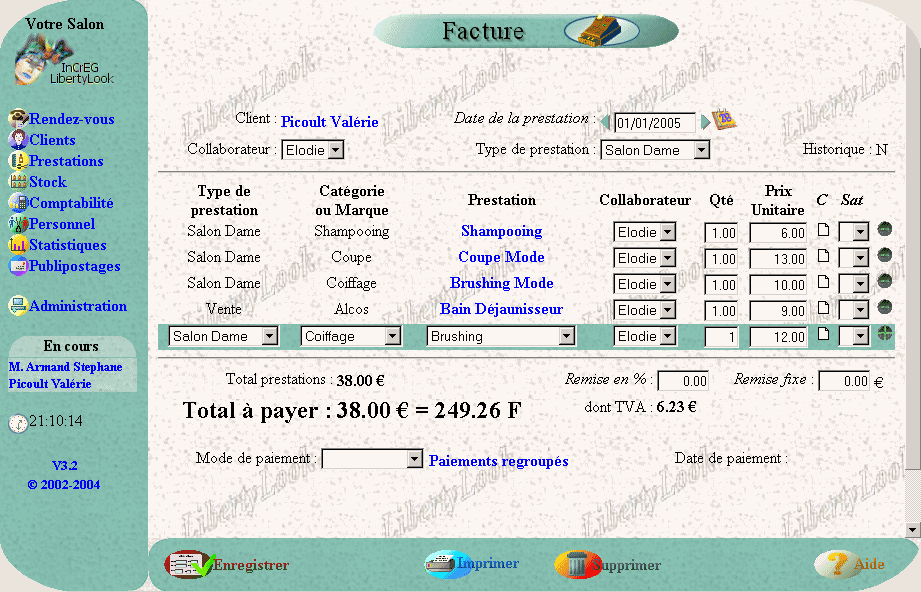Programmes de Sudoku
Programme en JavaScript pour la manipulation de Sudoku
const startTime = new Date();
const GRID_SIZE=9;
function checkGrid(grid, position, number) {
// Check hline
let hlineOk = true;
for (let i = 0; i < GRID_SIZE; i++) {
hlineOk = hlineOk && (grid[position.y][i] !== number);
}
// Check vline
let vlineOk = true;
for (let i = 0; i < GRID_SIZE; i++) {
vlineOk = vlineOk && (grid[i][position.x] !== number);
}
// Check Square
let squareOk = true;
const squareXStart = Math.trunc(position.x / 3) * 3;
const squareYStart = Math.trunc(position.y / 3) * 3;
for (let x = 0; x < 3; x++) {
for (let y = 0; y < 3; y++) {
squareOk = squareOk && (grid[squareYStart+y][squareXStart+x] !== number);
}
}
return squareOk && vlineOk && hlineOk;
}
function holesCompare(hole1, hole2) {
return (hole1.possibilities.length - hole2.possibilities.length);
}
function solver(grid) {
const workGrid = JSON.parse(JSON.stringify(grid));
let gridModified = false;
const holes = [];
// Step 1 : search each hole
for (let x = 0; x < GRID_SIZE; x++) {
for (let y = 0; y < GRID_SIZE; y++) {
if (grid[y][x] === null) {
holes.push({x, y, possibilities: []});
}
}
}
// Step 1bis : Nothing to do ? Exit (for recursion)
if (holes.length == 0) {
return grid;
}
// NB : From that point, work only with workGrid
// Step 2 : for each hole, enumerate possibilities
for (let i = 0; i < holes.length; i++) {
for (let number = 1; number <= 9; number++) {
if (checkGrid(workGrid, holes[i], number)) {
holes[i].possibilities.push(number);
}
}
// If one hole has no possitibility > The grid is a failure
if (holes[i].possibilities.length === 0) {
return null;
}
}
// Step 3 : Fill hole with only 1 possibility
for (let i = 0; i < holes.length; i++) {
if (holes[i].possibilities.length === 1) {
if (checkGrid(workGrid, holes[i], holes[i].possibilities[0])) {
workGrid[holes[i].y][holes[i].x] = holes[i].possibilities[0];
gridModified = true;
}
else {
// 2 obvious possibility exlude themselves
return null;
}
}
}
// Step 4 : Repeat until no more obvious hole
if (gridModified) {
return solver(workGrid);
}
// Order holes on possibilities length
holes.sort(holesCompare);
// Try one possibility and recurse
for (let i = 0; i < holes.length; i++) {
const tryGrid = JSON.parse(JSON.stringify(workGrid));
for (let possibility = 0; possibility < holes[i].possibilities.length; possibility++) {
if (checkGrid(tryGrid, holes[i], holes[i].possibilities[possibility])) {
tryGrid[holes[i].y][holes[i].x] = holes[i].possibilities[possibility];
let finalGrid = solver(tryGrid);
if (finalGrid != null) {
// It's over
return finalGrid;
}
else {
tryGrid[holes[i].y][holes[i].x] = null;
}
// Try next possibility
}
}
// no possibility fits for this hole !!
return null;
}
// Should never be there
throw `Should never end function here for grid ${JSON.stringify(workGrid)}`;
}
function giveMeOneHint(grid) {
const finalGrid = solver(grid);
const holes = [];
if (finalGrid === null) {
return null;
}
// Step 1 : search each hole
for (let x = 0; x < GRID_SIZE; x++) {
for (let y = 0; y < GRID_SIZE; y++) {
if (grid[y][x] === null) {
holes.push({x, y});
}
}
}
// Select a hole that will be given as an hint
const hintHole = Math.trunc(Math.random() * holes.length);
return {x: holes[hintHole].x, y: holes[hintHole].y, number: finalGrid[holes[hintHole].y][holes[hintHole].x]};
}
// Permet de créer plus facilement une grille de Sudoku à partir d'une chaine contenant tous les chiffres à la suite (et un autre caractère que 1-9 pour les trous)
function stringToGrid(chaine) {
const grid = [];
let pos = 0;
if (chaine.length != GRID_SIZE*GRID_SIZE) {
return null;
}
for (let x = 0; x < GRID_SIZE; x++) {
let line = [];
for (let y = 0; y < GRID_SIZE; y++) {
const num = parseInt(chaine.charAt(pos++));
if (num > 0) line.push(num);
else line.push(null);
}
grid.push(line);
}
return grid;
}
function generateGrid(numToFill) {
const grid = [];
let pos = 0;
// Empty Grid
for (let x = 0; x < GRID_SIZE; x++) {
let line = [];
for (let y = 0; y < GRID_SIZE; y++) {
line.push(null);
}
grid.push(line);
}
let numbers = 0;
while (numbers < numToFill) {
if (numbers < 25) {
const x = Math.floor(Math.random() * GRID_SIZE);
const y = Math.floor(Math.random() * GRID_SIZE);
const number = 1 + Math.floor(Math.random() * GRID_SIZE);
if ((grid[y][x] === null) && (checkGrid(grid, {x, y}, number))) {
grid[y][x] = number;
numbers++
}
}
else {
const hint = giveMeOneHint(grid);
if (hint !== null) {
grid[hint.y][hint.x] = hint.number;
numbers++;
}
}
}
// Vérification
if (solver(grid)) {
return grid;
}
else {
throw 'Grid is broken';
}
}
exports.checkGrid = checkGrid;
exports.solver = solver;
exports.giveMeOneHint = giveMeOneHint;
exports.stringToGrid = stringToGrid;
exports.generateGrid = generateGrid;
exports.GRID_SIZE = GRID_SIZE;


